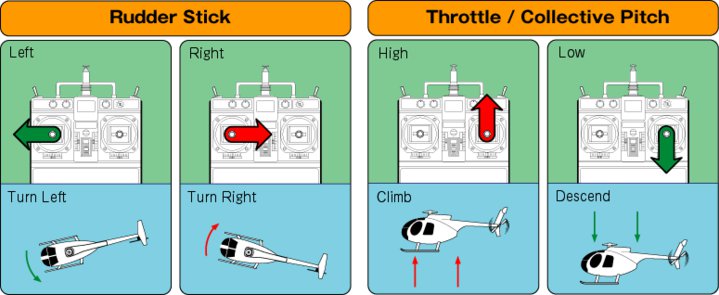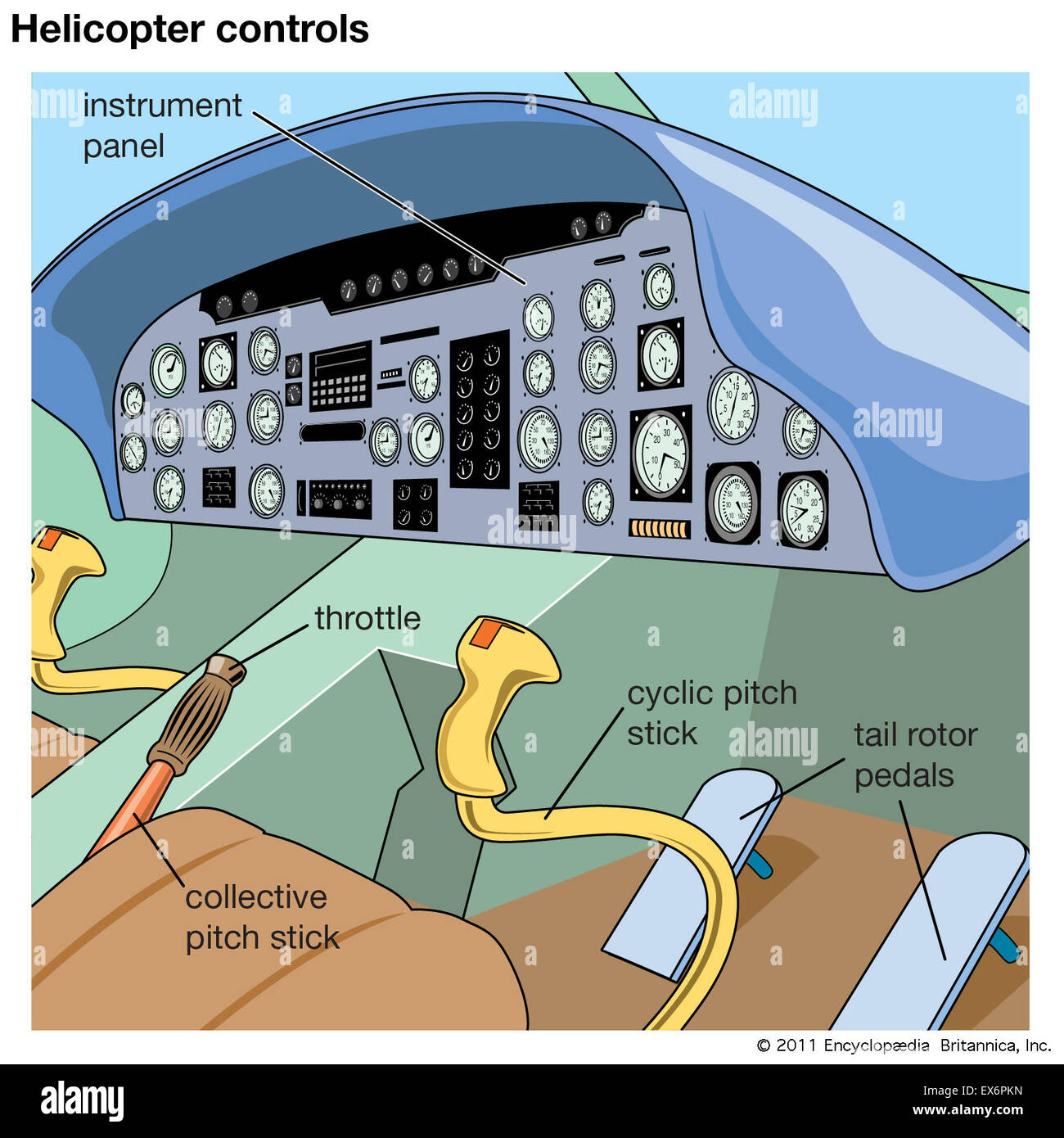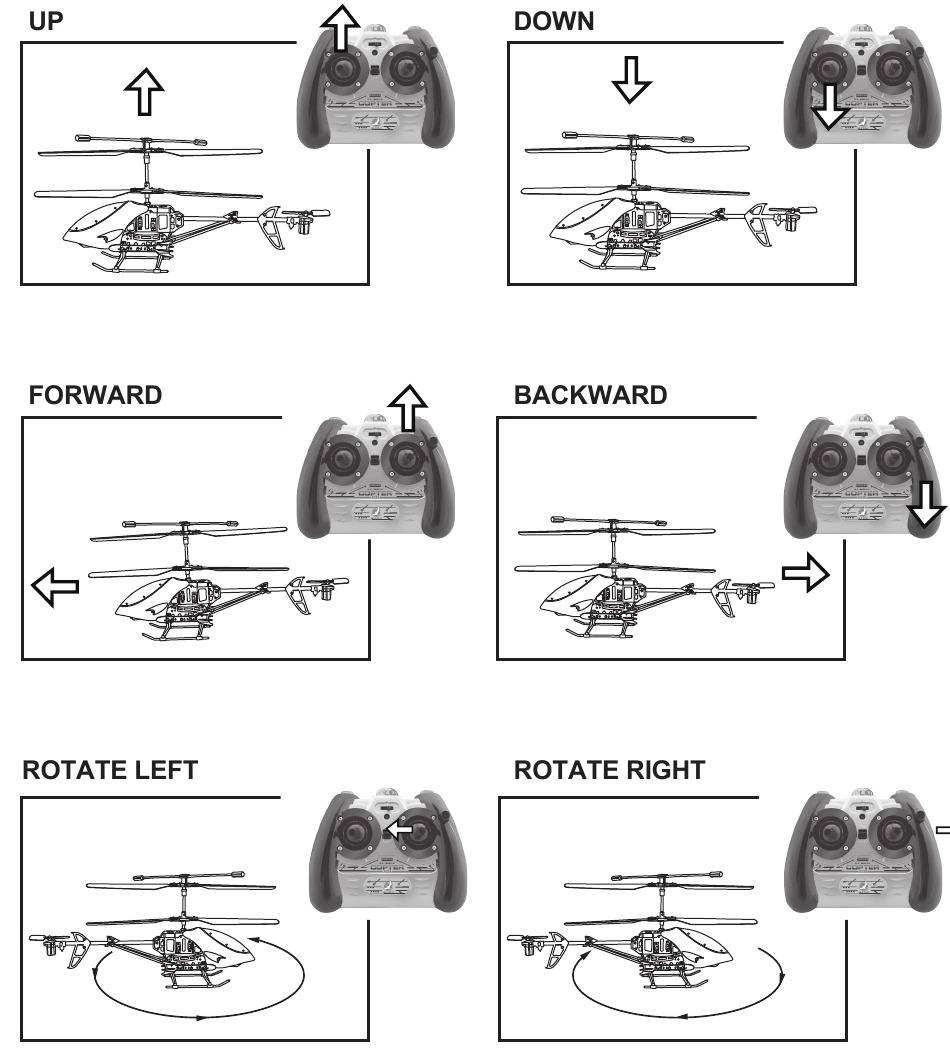Hey there, fellow toy helicopter enthusiasts! If you’ve ever marveled at how those tiny machines zip through the air, you’re not alone. Toy helicopters are more than just fun gadgets; they spark curiosity and provide a fantastic way to learn about basic aerodynamics. Whether you’re a complete beginner or looking to refine your skills, understanding the ins and outs of these flying wonders is key. So, let’s dive into the world of toy helicopters and get you soaring!
Understanding the Basic Controls

Getting the hang of your toy helicopter’s controls can feel a bit overwhelming at first, but once you break it down, it’s a breeze! Here’s a simple guide to help you understand the basic controls and how they affect your helicopter's flight.
1. The Remote Control Layout:
- Throttle: This is typically a stick or button that controls the altitude of your helicopter. Pushing it up increases the rotor speed, lifting your helicopter off the ground.
- Yaw: This control helps your helicopter rotate left or right. Adjusting yaw is crucial for changing your helicopter's direction without altering its altitude.
- Pitch: This control tilts the nose of the helicopter forward or backward, allowing it to move forward or backward.
- Roll: This is responsible for the helicopter moving side to side. It’s essential for maneuvering around obstacles.
2. Learning to Take Off:
Start by gently pulling the throttle stick. Most toy helicopters require only a small amount of throttle to lift off the ground. If your helicopter starts to tilt or spin, don’t panic! Adjust the yaw control to stabilize your flight.
3. Hovering Practice:
Once you’re airborne, practice hovering. This basic skill is foundational for more advanced maneuvers. Try to maintain a steady throttle and use yaw to keep your helicopter facing a consistent direction. It’s all about finding that sweet spot!
4. Directional Flying:
Now that you’re comfortable hovering, experiment with directional flying. Use pitch and roll to direct your helicopter forward, backward, and sideways. Start slow and gradually increase your speed as you gain confidence. Remember, practice makes perfect!
5. Landing Safely:
Landing can be trickier than taking off. Gradually decrease the throttle and gently guide the helicopter down. Make sure to control the yaw to keep the helicopter steady as it descends. A smooth landing will help you avoid crashes and keep your helicopter in good shape.
In summary, learning to control your toy helicopter is all about understanding the basics and practicing regularly. With a little patience and perseverance, you’ll be performing loops and tricks in no time! So grab your remote, and let’s hit the skies!
Also Read This: Understanding Dailymotion’s Strictness in Platform Rules and Guidelines
3. Tips for First-Time Flyers

Starting your journey with toy helicopters can be incredibly exciting but also a bit daunting. Here are some friendly tips to help you soar smoothly through your first flights!
- Read the Manual: It might seem boring, but taking a few minutes to glance over the manual can save you a lot of headaches later. You'll get familiar with your helicopter's specific controls, features, and battery instructions.
- Choose the Right Environment: Start flying in an open space, like a park or a large backyard, away from trees, power lines, and crowds. A calm day with no wind is ideal for beginners.
- Practice with a Simulator: If you have access to a flight simulator, give it a try! It’s a great way to get comfortable with the controls without the risk of crashing your real helicopter.
- Take it Slow: On your first few flights, keep the helicopter low to the ground. Focus on getting the hang of hovering before trying any advanced maneuvers like turns or flips.
- Control Distance: Keep your helicopter within sight at all times. This helps you maintain control and gauge its altitude. If it gets too far away, it can be challenging to manage.
Remember, the initial flights are all about familiarity and control. Don’t rush things; take your time to enjoy the process and learn at your own pace!
Also Read This: How to Make a Rose with Ribbon: Creative DIY Tutorial on Dailymotion
4. Common Mistakes and How to Avoid Them

Even seasoned flyers make mistakes, but many of them can be avoided with a little awareness. Here’s a breakdown of common pitfalls and tips to steer clear of them:
| Mistake | How to Avoid |
|---|---|
| Flying in Windy Conditions | Check the weather before heading out. If it’s breezy, wait for a calmer day. |
| Neglecting Battery Life | Always check your battery levels before flying. Consider investing in extra batteries to ensure you’re never caught off-guard! |
| Overcorrecting Controls | Stay gentle with the controls. Overreacting can lead to crashes. Small adjustments are key! |
| Ignoring the Learning Curve | Accept that mistakes are part of learning. Give yourself grace and don’t be too hard on yourself! |
| Neglecting to Perform Pre-Flight Checks | Always do a quick inspection of your helicopter before flying. Check rotors, connections, and that everything is secure. |
By being aware of these common mistakes and following the tips to avoid them, you’ll be well on your way to mastering your toy helicopter skills. Happy flying!
Also Read This: How to Download Dailymotion Videos to Your Mac Without Additional Software
5. Advanced Techniques for Skilled Pilots
Once you’ve mastered the basics of flying a toy helicopter, it’s time to explore some advanced techniques that can elevate your piloting skills. These techniques not only enhance your flying experience but also improve your control over the helicopter, making you a skilled pilot in no time!
1. Precision Hovering
Precision hovering is a skill that allows you to maintain your helicopter in a stable position without much movement. To practice this, find a calm day and a spacious area. Start with your helicopter a few feet off the ground. Use tiny adjustments on the throttle and controls to keep your helicopter steady. It’s all about those subtle movements!
2. Forward Flight and Backward Flight
Transitioning from hovering to forward flight can be tricky but rewarding. Gradually push the control stick forward to gain speed, then pull back slightly to slow down. When flying backward, the key is to maintain a balanced throttle while gently pulling the stick back. This may require some practice, but once you nail it, you’ll impress everyone with your skills!
3. Figure Eights
Flying figure eights is a fantastic way to hone your turning and speed control. Start by hovering and then smoothly transition into a right turn, followed by a left turn, forming a figure eight pattern in the air. This exercise teaches you to manage your helicopter’s speed while navigating turns, making it a favorite among seasoned pilots.
4. Stunts and Tricks
Once you’re comfortable with the basics, try incorporating stunts like barrel rolls and flips. Ensure your helicopter is designed for acrobatic maneuvers, and always practice in an open space. Start with gentle flips to get a feel for the controls before attempting more complex tricks.
5. Wind Handling
Flying in windy conditions can be challenging, but with advanced control techniques, you can navigate those gusts like a pro. Always fly into the wind to maintain control and try to avoid sudden movements. It’s all about reading the wind and adjusting your inputs accordingly. With practice, you’ll gain confidence in handling your helicopter even on breezy days!
6. Maintenance and Care for Your Toy Helicopter
To keep your toy helicopter flying smoothly and ensure its longevity, regular maintenance and care are crucial. Here are some tips and practices to keep it in top shape:
1. Routine Inspections
Before each flight, take a moment to inspect your helicopter. Look for any loose parts, cracks, or damage. Check the rotors for chips and ensure they are securely attached. A quick inspection can save you from potential crashes!
2. Cleaning
After flying, it’s essential to clean your helicopter. Dust and debris can accumulate on the rotors and body, affecting performance. Use a soft brush or cloth to gently wipe down the surfaces. For tougher grime, a damp cloth with mild soap works wonders. Just ensure everything is dry before storing it!
3. Battery Care
Batteries are the lifeblood of your toy helicopter. Always charge them fully before your flight, and don’t over-discharge them. If your helicopter uses rechargeable batteries, consider investing in a quality charger that prevents overcharging and extends battery life. Store batteries in a cool, dry place to avoid damage.
4. Rotor Maintenance
The rotor blades are crucial for flight stability. Periodically check for any nicks or bends, and be sure to replace them if they look worn out. Keeping your rotors balanced is key to achieving smoother flights.
5. Storage
When not in use, store your helicopter in a protective case to prevent accidental damage. Avoid leaving it in direct sunlight or extreme temperatures, as this can warp parts and degrade the battery. A cool, dry spot is ideal!
By following these maintenance tips, you can ensure that your toy helicopter remains a reliable companion for many flights to come. Happy flying!
 admin
admin








